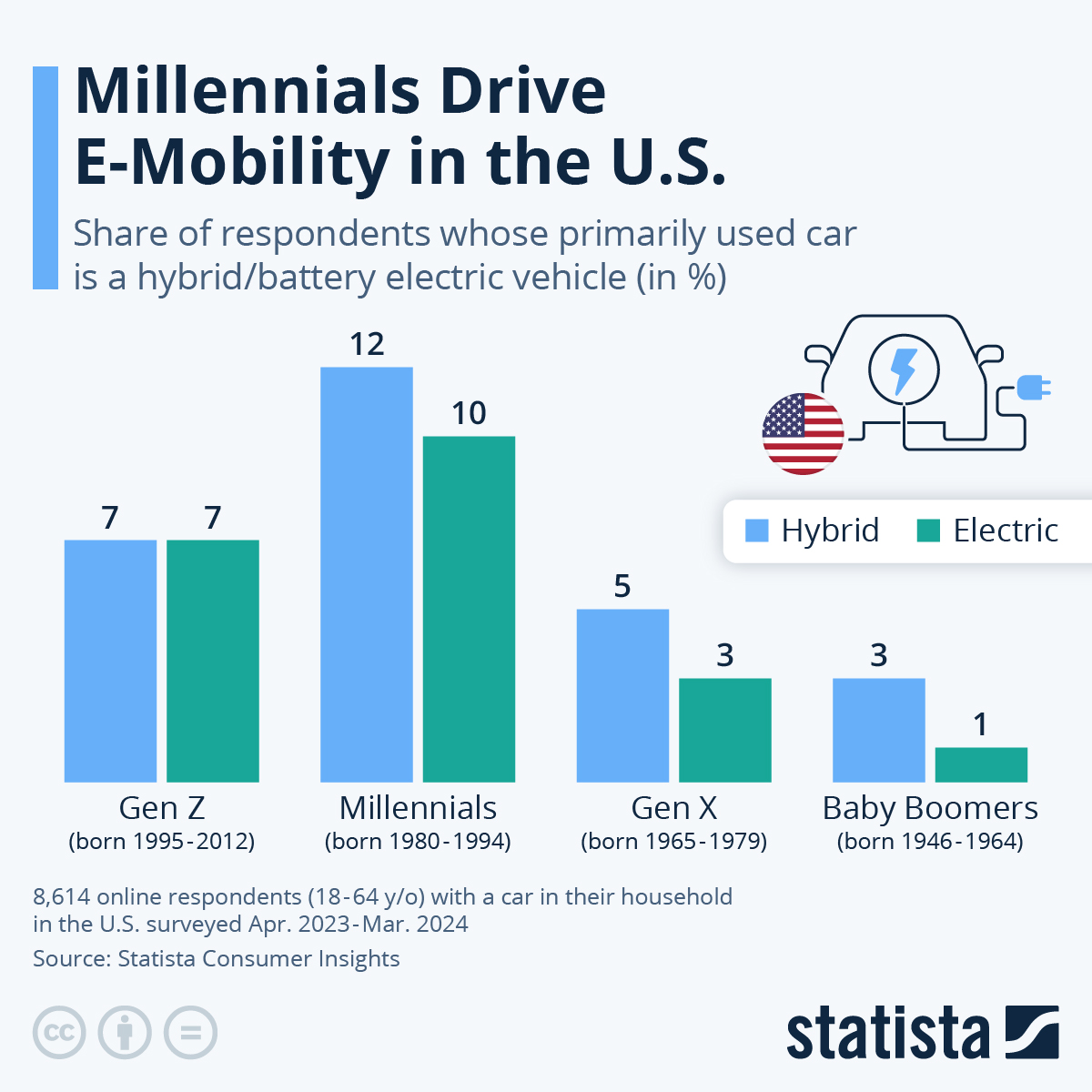Millennials Drive E-Mobility In The US
The decision to switch from a fossil-fuel-powered car to a more emission-friendly model can be governed by a variety of factors, ranging from monetary to ideological. As Statista’s Florian Zandt reports, a recent survey from Statista’s Consumer Insights suggests that the adoption of plug-in hybrid (PHEV) and battery electric vehicles (BEVs) can also be seen as a generational question, at least in the United States.
You will find more infographics at Statista
For example, 22 percent of U.S. respondents born between 1980 and 1994 have an electric vehicle as a primary car in their household, while 10 percent own a BEV.
Gen Z shows a similar enthusiasm for e-mobility, with a total of 14 percent reporting either a PHEV or BEV in their household.
Survey participants belonging to the baby boomer generation born, in the case of this specific survey, between 1960 and 1964 had a significantly lower interest in switching to electric models, with only three percent owning a PHEV and one percent having a BEV as the primary household car.
Despite underlying sustainability issues like the sourcing of rare earth materials and cobalt, lithium and nickel, which are also used in the production of many other industrial or consumer electronics, fleet electrification is seen as an important step to decarbonize the emission-intensive transport and logistics sector. With large car companies introducing a wider range of PHEV and BEV models to their portfolio and leading U.S. BEV producer Tesla ramping up sales numbers over the past couple of years, progress towards this goal has increased significantly between 2020 and 2023 in the United States.
However, EV sales only make up a fraction of total car sales. For example, data from WardsAuto released by the Argonne National Laboratory shows 1.4 million cars with plug-in hybrid or fully electric drive sold in the U.S. in 2023, the majority of which are BEVs. Overall sales of light trucks and passenger cars amounted to between 13.5 and 15.5 million in the same year, depending on the source.
Tyler Durden
Sun, 05/19/2024 – 16:20




Share This Article
Choose Your Platform: Facebook Twitter Linkedin